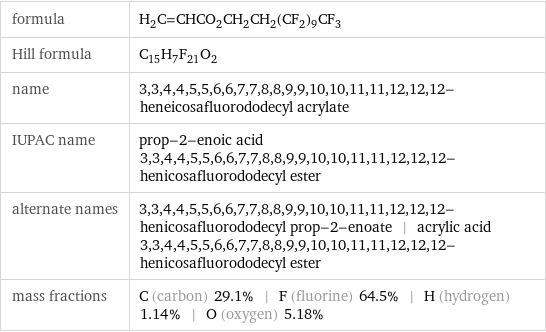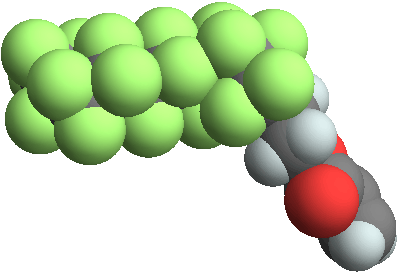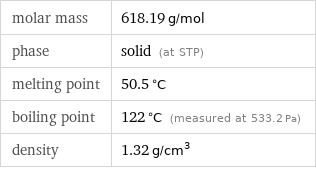Input interpretation

3, 3, 4, 4, 5, 5, 6, 6, 7, 7, 8, 8, 9, 9, 10, 10, 11, 11, 12, 12, 12-heneicosafluorododecyl acrylate
Chemical names and formulas

formula | H_2C=CHCO_2CH_2CH_2(CF_2)_9CF_3 Hill formula | C_15H_7F_21O_2 name | 3, 3, 4, 4, 5, 5, 6, 6, 7, 7, 8, 8, 9, 9, 10, 10, 11, 11, 12, 12, 12-heneicosafluorododecyl acrylate IUPAC name | prop-2-enoic acid 3, 3, 4, 4, 5, 5, 6, 6, 7, 7, 8, 8, 9, 9, 10, 10, 11, 11, 12, 12, 12-henicosafluorododecyl ester alternate names | 3, 3, 4, 4, 5, 5, 6, 6, 7, 7, 8, 8, 9, 9, 10, 10, 11, 11, 12, 12, 12-henicosafluorododecyl prop-2-enoate | acrylic acid 3, 3, 4, 4, 5, 5, 6, 6, 7, 7, 8, 8, 9, 9, 10, 10, 11, 11, 12, 12, 12-henicosafluorododecyl ester mass fractions | C (carbon) 29.1% | F (fluorine) 64.5% | H (hydrogen) 1.14% | O (oxygen) 5.18%
Lewis structure

Draw the Lewis structure of 3, 3, 4, 4, 5, 5, 6, 6, 7, 7, 8, 8, 9, 9, 10, 10, 11, 11, 12, 12, 12-heneicosafluorododecyl acrylate. Start by drawing the overall structure of the molecule, ignoring potential double and triple bonds: Count the total valence electrons of the carbon (n_C, val = 4), fluorine (n_F, val = 7), hydrogen (n_H, val = 1), and oxygen (n_O, val = 6) atoms: 15 n_C, val + 21 n_F, val + 7 n_H, val + 2 n_O, val = 226 Calculate the number of electrons needed to completely fill the valence shells for carbon (n_C, full = 8), fluorine (n_F, full = 8), hydrogen (n_H, full = 2), and oxygen (n_O, full = 8): 15 n_C, full + 21 n_F, full + 7 n_H, full + 2 n_O, full = 318 Subtracting these two numbers shows that 318 - 226 = 92 bonding electrons are needed. Each bond has two electrons, so in addition to the 44 bonds already present in the diagram add 2 bonds. To minimize formal charge oxygen wants 2 bonds and carbon wants 4 bonds. Identify the atoms that want additional bonds and the number of electrons remaining on each atom: Fill in the 2 bonds by pairing electrons between adjacent highlighted atoms: Answer: | |
3D structure

3D structure
Basic properties

molar mass | 618.19 g/mol phase | solid (at STP) melting point | 50.5 °C boiling point | 122 °C (measured at 533.2 Pa) density | 1.32 g/cm^3
Units

Solid properties (at STP)

density | 1.32 g/cm^3
Units

Chemical identifiers

CAS number | 17741-60-5 PubChem CID number | 87274 PubChem SID number | 24870993 SMILES identifier | C=CC(=O)OCCC(C(C(C(C(C(C(C(C(C(F)(F)F)(F)F)(F)F)(F)F)(F)F)(F)F)(F)F)(F)F)(F)F)(F)F InChI identifier | InChI=1/C15H7F21O2/c1-2-5(37)38-4-3-6(16, 17)7(18, 19)8(20, 21)9(22, 23)10(24, 25)11(26, 27)12(28, 29)13(30, 31)14(32, 33)15(34, 35)36/h2H, 1, 3-4H2 MDL number | MFCD00236108
Safety properties

flash point | 110 °C